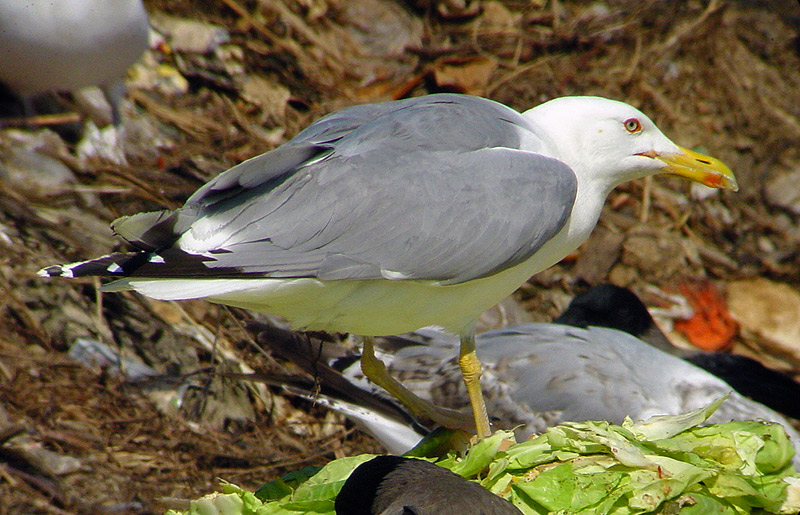 Herring
Gull - Zilvermeeuw (argentatus & argenteus)
Herring
Gull - Zilvermeeuw (argentatus & argenteus)
(last update: 31 maart 2004)
Home
Links
to Gull Sites
Gull Taxa
Gull Topography
Grey & Colour Charts
Locations in NW Europe
Summaries of Articles
About ORG
@
(2 images) Herring Gull adult (argentatus), July 16 2003, Tampere, Finland (61.31N, 23.43E).

Adult nominate argentatus, with yellow legs, clear yellow iris, red orbital ring, yellow bill and the red gonydeal spot confined to the lower mandible. The white mirror on P10 is separated from the greyish inner-web by a thin black medial band along the inner-web (just no thayeri pattern on P10) and the mirror on P10 merges with the tip. Wing-tip code 5IIIA. No black on P10, P9 mirror on both webs, sharply demarcated triangle on outer-web of P5 and sharp division between grey and black on P10. Deep yellow legs is not uncommon in SW Finnish argentatus.
From June to December, adult argentatus
undergo a complete moult resulting in so-called "winter
plumage". By August, the first neat streaks can be found on the crown
and hind-neck. After the complete moult is finished by late autumn, the
head will often show extensive 'winter streaking'.
From June onwards, the new plain grey wing-coverts are moulted
in, starting with the outermost median coverts and ending in the carpal
edge. By the end of the complete moult, when P10 is completely
replaced (sometimes as late as mid-January in argentatus),
the scapulars, mantle, all the wing-coverts, rectrices and remiges will be
replaced as well.
During the summer, the primaries are moulted. In adult argentatus, the last outer primary P10 will be fully grown by January in the most northern population, by early December in southern populations, about equal to West-European argenteus.
Adult northern argentatus show a
different pattern in the outer primaries, compared to argenteus. In
argentatus, especially from northern Scandinavia, the black markings
on P5 are limited or absent and, if black on P5 is present, this black has
diffuse edges. Most often, these black sub-terminal markings are completely
lacking on P5. In Baltic argentatus, black on P5 is normally confined to the outer-web, with sharply defined
edges.
Argenteus normally has a black sub-terminal band on the top of P10,
dividing the tip from the mirror. If the black sub-terminal band on P10 is
broken, the outer-web of P10 still shows black marking. Argentatus
normally completely lacks sub-terminal markings, also on the outer-web of
P10. Some argentatus completely lack black along the edge of the
inner-web, creating a so-called "thayeri pattern".
